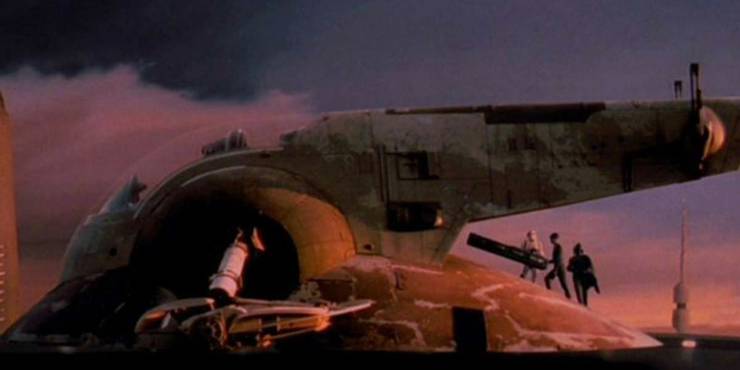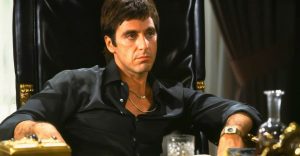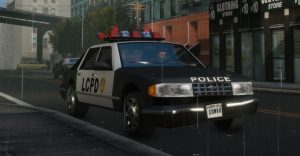The Mandalorian: 10 Things You Didn’t Know About Boba Fett’s Slave I

The Slave I is one of the most iconic starships in all of Star Wars. It’s also one of the most mysterious. The personal ship of the bounty hunter Boba Fett has made a few select appearances over the years, but perhaps none more appreciated than its return in chapter 14 of The Mandalorian.
Not only is Boba Fett back, but so is his ride. With circumstances being what they are in the series, it’s likely fans are about to get to know much more than they ever bargained for about the unique spacecraft. The ship’s long history in the movies and Star Wars Legends may offer some clues to its future.
10 Based On A Radar Dish

The design of the Slave I is unique among starships not just in Star Wars, but in science-fiction as a whole. The inspiration for the ship comes from an equally unique source. Concept artist Nilo Rodis-Jamero designed the ship for The Empire Strikes Back, and based the design off of a radar dish.
Popular belief is that the craft was based on a street lamp, but this actually isn’t the case. Legendary concept artist Ralph McQuarrie also had a hand in designing the oversized cockpit of the ship.
9 Firespray Class

The Slave I is unique in that it’s so singular, but it’s actually part of the Firespray-class of interceptors. To be precise, it’s a Firespray-31-class patrol and attack craft. These patrol ships, like so many others in Star Wars, were manufactured by Kuat Systems Engineering. Kuat’s primary competitor, Seinar Fleet Systems, produced the bulk of the Imperial starships seen in the saga. Firesprays patrolled the prison moon Oovo IV, making sure no one got in or out of the supermax facility.
8 Unique Configuration

The elliptical shape of the ship gives it a unique profile. The most unique thing about it is that, while flying, it completely changes its orientation. On the surface, the Slave I sits flat on its oval base. During flight, however, the ship rotates 90 degrees into a vertical orientation.
This change in orientation is singular amongst ships in a galaxy far, far away, with the exception of the B-Wing starfighter, one of the most unique and interesting crafts used by the Rebel Alliance during the Galactic Civil War.
7 Gunboat

The Firespray-31 was designed as a swift pursuit vehicle, but Boba Fett transformed the ship into a flying weapons platform. His father Jango Fett made some alterations when he first acquired the ship, but those were nothing like what Boba did, as he made the Slave I one of the most feared ships in the galaxy.
Among the ship’s vast array of armaments were two GN-40 twin rotating blaster cannons, two HM-8 concussion missile tube launchers, an ion cannon, and two AA/SL proton torpedo launchers.
6 Seismic Charges

One of the most devastating weapons in the ship’s arsenal was its seismic charges. Jango Fett used these unique weapons against Obi-Wan Kenobi, in a dogfight over Geonosis. Despite flying not being one of Kenobi’s best traits, he acquitted himself very well.
The Void-7 seismic charge generated a massive implosion that created an equally incredible shockwave of energy. Jango Fett detonated several of these in an asteroid field, obliterating giant chunks of rock and nickel like they were powder.
5 Stolen By Jango Fett

The ship would have remained part of the fleet protecting Oovo IV had it not been stolen by Jango Fett, one of the main bounty hunters in the galaxy. While The Mandalorian has retconned some aspects of the bounty hunter’s origin, it’s unclear if this part of his history will change.
Jango stole the ship, just one of six in existence, from the prison moon while delivering a captured prisoner to the sector. Things got heated, as they often do, and Jango ended up escaping Oovo IV in Slave I after his ship had been destroyed.
4 Updated Paint Job

Jango Fett made some alterations to Slave I after stealing it from Oovo IV. His tenure with the ship featured a blue and yellow paint scheme with a gray metal chassis. After Boba Fett inherited the ship, he changed the look again. The ship’s look during the original trilogy, and now The Mandalorian features a dark red paint along the base, with a gray, almost green color dominating the rest of the ship. It’s also heavily scuffed and tattered from its many battles over the years.
3 Lost To Hondo Ohnaka

Boba Fett was only a child when he lost his father in the arena on Geonosis. He traveled for a time in the company of Aurra Sing and Bossk, learning the ropes as a bounty hunter. He met his match in Hondo Ohnaka, one of the most likable characters from the Clone Wars animated series.
Ohnaka took possession of Slave I after it was seemingly destroyed. Jedi Ahsoka Tano, in one of her best episodes, cuts one of its wings off pursuing Sing, and the ship crashed.
2 Slave II

The Slave I is barely seen in the movies, but it gets a lot more attention in the books and comics. All of those stories have been relegated to Legends, or non-canon, including when it was destroyed by Han Solo and the Millenium Falcon on the planet Nar Shaada. Fett replaced it with the Slave II, a much different ship that in profile recalls the Republic gunships of the Clone Wars era. This ship didn’t last long and was eventually succeeded by the Slave III and the Slave IV.
1 Still A Mystery

The Slave I returned in chapter 14 of The Mandalorian, seemingly none the worse for wear. Though Boba Fett left his experience with the Sarlaac scarred, his ship seems to have endured the five years after Return of the Jedi just fine. One of the many questions fans need answers to in chapter 15 is how. Jawas wasted no time disassembling the Razor Crest in chapter 2 of the series, and it seems likely the ones on Tatooine would have done the same. They did come for Boba Fett’s armor, after all. It’s just one more mystery for the legendary ship.
About The Author

















